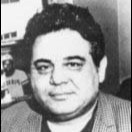
1930 - 1974
Samuel Joseph Byck
Summary
Name:
Samuel Joseph ByckYears Active:
1974Birth:
January 30, 1930Status:
DeceasedClass:
MurdererVictims:
2Method:
ShootingDeath:
February 22, 1974Nationality:
USA
1930 - 1974
Samuel Joseph Byck
Summary: Murderer
Name:
Samuel Joseph ByckStatus:
DeceasedVictims:
2Method:
ShootingNationality:
USABirth:
January 30, 1930Death:
February 22, 1974Years Active:
1974bio
Samuel Joseph Byck was born on January 30, 1930, in South Philadelphia to a poor Jewish family. He dropped out of high school in ninth grade to help support his struggling household and later enlisted in the U.S. Army in 1954, serving until his honorable discharge in 1956. Shortly after leaving the military, he married and became a father to four children. Despite these early attempts to build a stable life, Byck faced several personal and professional hardships, including financial difficulties and business failures. In 1972, his wife divorced him, which pushed him into a period of deep depression. That same year, he admitted himself for psychiatric treatment, staying for two months.
Byck grew increasingly paranoid and resentful of the U.S. government, believing that President Richard Nixon and his administration were conspiring to oppress the poor. After the Small Business Administration rejected his loan application, Byck’s hostility toward Nixon intensified. He came to the attention of the Secret Service when he threatened the president and attempted to send tapes of his grievances to public figures such as Jonas Salk, Senator Abraham Ribicoff, and composer Leonard Bernstein. He also tried unsuccessfully to join the Black Panther Party, believing they shared his anti-government sentiments. Despite his erratic behavior and threats, authorities deemed him harmless and took no further action.
murder story
On February 22, 1974, Samuel Byck attempted an audacious plot to assassinate President Richard Nixon by hijacking an airplane and crashing it into the White House. Byck had spent weeks planning what he called “Operation Pandora’s Box,” stealing a .22-caliber revolver from a friend and assembling a homemade gasoline bomb. He recorded multiple tapes explaining his motives, convinced that his actions would make him a hero who stood up for the poor against government corruption. Early that morning, he drove to Baltimore/Washington International Airport armed with the gun and bomb.
Upon arrival, Byck shot and killed Maryland Aviation Administration police officer George Neal Ramsburg before boarding Delta Air Lines Flight 523, a DC-9 jet preparing to depart for Atlanta. Once inside, he ordered pilots Reese Loftin and Fred Jones to take off immediately, but they stalled for time, explaining that the aircraft could not depart with its doors open and wheel blocks in place. Growing agitated, Byck fatally shot pilot Fred Jones and critically wounded captain Reese Loftin, then attempted to coerce a passenger into flying the plane. Panic ensued as passengers and crew scrambled for safety.
Outside the aircraft, responding officers tried to disable the jet by shooting its tires, but their revolver rounds failed to penetrate. A standoff developed as police closed in on the plane. Anne Arundel County police officer Charles Troyer eventually fired four shots through the cabin door with Ramsburg’s confiscated .357 Magnum, hitting Byck twice and leaving him wounded. Moments later, before police could fully secure the aircraft, Byck turned his revolver on himself and died from a self-inflicted gunshot wound to the head. A briefcase containing his makeshift gasoline bomb was discovered beneath his body.
The plane never left the gate, and Nixon, who was in the White House that day, was never in direct danger. Investigators later uncovered tapes Byck had mailed to journalist Jack Anderson and others, detailing his intentions to “strike a blow” against political corruption. Authorities revealed that Byck had previously protested outside the White House, even donning a Santa Claus suit during a Christmas Eve demonstration in 1973.
Although largely forgotten by the public, Byck’s attempted hijacking underscored vulnerabilities in aviation security and prefigured the use of hijacked aircraft as weapons decades later. He was buried in Mount Jacob Cemetery in Glenolden, Pennsylvania. The failed assassination attempt has since been referenced in cultural works, including Stephen Sondheim’s musical Assassins and the 2004 film The Assassination of Richard Nixon.